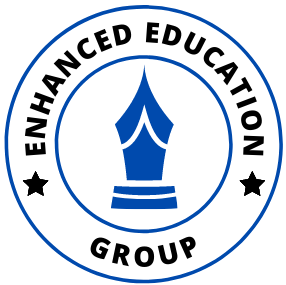Extracurricular activities play a significant role in the holistic development of students. From sports and music to clubs and volunteer work, these activities extend learning beyond the classroom and contribute to a well-rounded education. This article explores the multifaceted impact of extracurricular activities on student development, highlighting their benefits and long-term effects on personal and academic growth.
Understanding Extracurricular Activities
What Are Extracurricular Activities?
Extracurricular activities are pursuits outside the regular academic curriculum that engage students in various interests and hobbies. These activities include:
- Sports Teams
- Arts and Music Programs
- Academic Clubs
- Volunteer and Community Service
- Student Government
Types of Extracurricular Activities
- Athletics: Sports teams, fitness clubs, and individual sports.
- Arts: Music, theater, visual arts, and dance.
- Academics: Debate, math club, science fairs, and language clubs.
- Community Service: Volunteering, charity events, and social work.
- Leadership: Student council, peer mentoring, and leadership workshops.
Academic Benefits
Enhanced Academic Performance
Participation in extracurricular activities is linked to improved academic performance. These activities help develop time management skills, discipline, and a strong work ethic, which translate into better performance in school.
Cognitive Development
Engaging in activities such as chess, debate, or music can enhance cognitive abilities. These activities stimulate critical thinking, problem-solving, and creative thinking, leading to improved academic skills.
College Admissions
Colleges and universities often consider extracurricular involvement when evaluating applicants. Participation in diverse activities can make students more competitive candidates by showcasing their well-roundedness and commitment.
Social and Emotional Benefits
Building Social Skills
Extracurricular activities provide opportunities for students to interact with peers, build friendships, and develop social skills. Working in teams or groups fosters communication, collaboration, and empathy.
Emotional Well-Being
Activities like sports and arts can serve as emotional outlets, helping students manage stress and anxiety. These pursuits offer a sense of achievement and boost self-esteem and confidence.
Leadership and Responsibility
Holding leadership positions in clubs or teams teaches responsibility, decision-making, and leadership skills. These experiences prepare students for future roles in their personal and professional lives.
Physical Benefits
Health and Fitness
Participation in sports and physical activities promotes a healthy lifestyle. Regular exercise improves physical fitness, reduces the risk of chronic diseases, and enhances overall well-being.
Skill Development
Sports and physical activities help students develop motor skills, coordination, and agility. These skills are essential for overall physical development and can contribute to success in various life areas.
Long-Term Impact
Career Preparation
Extracurricular activities can provide early exposure to career interests and skills. For instance, participating in a debate club can enhance public speaking abilities, while involvement in a science club can foster a passion for research and innovation.
Networking Opportunities
Activities often involve interactions with peers, mentors, and professionals, creating valuable networking opportunities. These connections can lead to internships, job opportunities, and lifelong relationships.
Lifelong Habits
The habits and skills developed through extracurricular activities, such as discipline, teamwork, and time management, often carry into adulthood. These lifelong habits contribute to personal and professional success.
Challenges and Considerations
Balancing Academics and Activities
One challenge is balancing academics with extracurricular commitments. Effective time management is crucial to ensure that students do not compromise their academic responsibilities.
Overcommitment
Students may sometimes overcommit to multiple activities, leading to burnout and stress. It’s essential to maintain a balanced schedule and prioritize activities based on interest and importance.
Accessibility and Inclusivity
Not all students have equal access to extracurricular opportunities due to socioeconomic factors or school resources. Schools should strive to offer inclusive programs that cater to diverse interests and needs.
Encouraging Participation
Parental Support
Parents play a vital role in encouraging participation in extracurricular activities. Supporting children’s interests and helping them manage their time can enhance their overall experience.
School Resources
Schools should provide a variety of extracurricular options and resources to support student participation. This includes adequate funding, facilities, and trained staff to guide and mentor students.
Community Involvement
Community organizations and local businesses can collaborate with schools to offer additional extracurricular opportunities. This partnership can enrich the available programs and provide real-world experiences.
FAQs
What are extracurricular activities?
Extracurricular activities are non-academic pursuits such as sports, arts, clubs, and volunteer work that students engage in outside the regular school curriculum.
How do extracurricular activities benefit academic performance?
Extracurricular activities improve time management, discipline, and cognitive skills, leading to enhanced academic performance and better college admission prospects.
What social skills are developed through extracurricular activities?
Participation in these activities fosters communication, teamwork, empathy, and leadership skills, contributing to better social interactions and emotional well-being.
Can extracurricular activities help in career preparation?
Yes, these activities provide early exposure to career-related skills, networking opportunities, and experiences that are valuable for future job prospects.
What challenges do students face in extracurricular activities?
Students may face challenges in balancing academics and activities, risk of overcommitment, and accessibility issues due to socioeconomic factors or limited school resources.
How can schools and communities encourage participation in extracurricular activities?
Schools can offer diverse programs and resources, while parents and communities can support and collaborate with schools to provide enriching opportunities for students.
Conclusion
Extracurricular activities are a crucial component of student development, offering academic, social, emotional, and physical benefits. By participating in these activities, students gain valuable skills and experiences that prepare them for future success. Encouraging active involvement in extracurricular pursuits is essential for fostering well-rounded, capable, and confident individuals.

